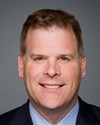Mr. Speaker, the response is as follows: (a) During the December 1998 Airport Soundscape Consultative Committee, it was decided that the approach path angle for runway 06L was to be increased to 3 degrees from 2.5 degrees, thus ensuring that aircraft are at a higher altitude while flying over Dorval and Pointe-Claire. Since February 1999, turbojets departing runway 24R must climb to 4000 feet before turning right. This higher altitude, compared to the previous 3000 feet, results in noise reduction of 3 dBA for the Beaconsfield and Pointe-Claire residents. In 1999, in order to increase the altitude at which Boeing 747 fly over residential areas, the operators of those aircraft were advised to review their operational procedures to ensure a minimum rate of climb at take off. In 1999, the preferential runway for night landings was changed to 06R instead of 24R. By flying over Lake St-Louis instead of over the residential areas of Montreal and Ville St-Laurent, fewer residents are affected by the noise.
Starting April 1st, 2000, exemptions to restricted hours were not granted for delays due to mechanical defects. In June 2000, amendments to the general aviation flight takeoff procedures were made so that departing aircraft operating between 11 p.m. and 7 a.m. and flying over industrial areas would avoid Montreal’s residential areas. In 2000, implementation of a noise awareness program for air traffic controllers was put into place. In March 2001, a new exemption program to restrict hours of operation for mechanical problems was introduced. This program only applies to chapter 3 aircraft, the most modern and quieter types, and allows the operators to extend their operating hours by one hour in case of real and documented problems. An annual quota was established at 200 exemptions, which will be prorated according to each airline’s movements. This procedure gives greater flexibility to airlines without increase in the total noise footprint.
In 2003, changes were made to the preferential runway procedure for day flights. Until then, with westerly winds, jets were taking off on runway 24L and landing on 24R, causing noise disturbances to a group of Dorval’s residents. The procedure was therefore changed to allow a number of take offs from 24R. In September 2006, a new preferential runway system was implemented for night flights. When there are favourable winds, departures take place in priority from runway 06L, followed by a left turn over highway 13; and landings take place on runway 06R. Residents of South Dorval, who were usually overflown by departing aircraft between 11:00 p.m. and 07:00 a.m., are now overflown by landing aircraft and Cartierville residents are overflown by departing aircraft. On February 9, 2009, since two of the performance criteria were not met, the historical priority runway system that was in effect prior to September 2006, ascribing priority to Runways 24 between midnight and 7 a.m., takeoffs and landings toward Lake St-Louis, was reinstated.
(b) After the implementation of the February 1999 procedure requiring that turbojets departing runway 24R climb to 4000 feet before turning right, studies have shown a reduction of 3dBA for residents living under the flight path.
According to Aéroport de Montréal’s annual report published in May 2009, “the most recent Noise Exposure Contour NEF 25 shows that the noise footprint at Montreal/Trudeau was 32.3 km² in size in 2007, representing a 60% decrease from 1995. During the same period, the number of residents living under the noise footprint has decreased by 83%, from 107,333 to 17,902. Airlines retiring older and noisier chapter 2 aircraft and replacing them with a new generation of modern, quieter and better performing airplanes and the implementation of noise abatement procedures are the factors that contributed the most to this improvement.”
The noise exposure forecast, NEF, mentioned in Aéroport de Montréal’s report is produced to encourage compatible land use planning in the vicinity of airports. A NEF 25 contour represents the area within which Transport Canada does not support or advocate residential housing.

